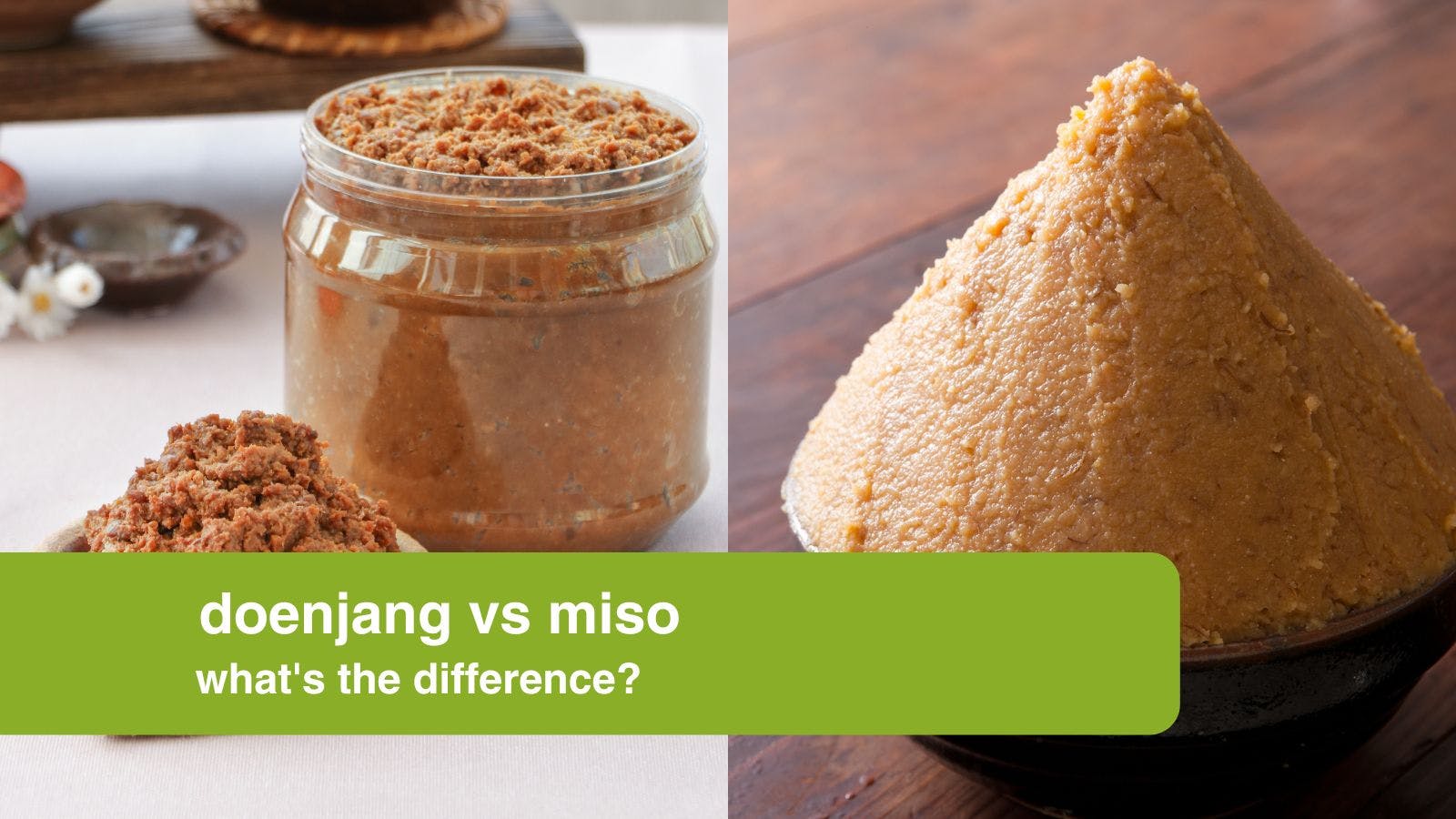your cart
Your cart is empty.
hints and tips
Doenjang vs Miso: What's the Difference?
Both doenjang and miso are fermented soybean pastes. However, Korean doenjang is produced differently from Japanese miso, creating different tastes.

If there’s one ingredient that unites much of East Asian cooking, it’s perhaps the soybean. This humble staple is seen across Asian food markets, creating everything from tofu to sauces and more.
Fermented soybeans, in particular, can be seen across Asian cooking. Two of the most commonly used examples are doenjang and miso – two seemingly identical foods but with distinct differences which speak to their respective cultures.
What are Doenjang and Miso?
Both doenjang and miso are pastes made from fermented soybeans. Doenjang is a traditional Korean food, while miso is the Japanese equivalent.
The idea of fermenting soybeans is as old as civilisation itself. Doenjang is mentioned in the oldest known book on Korean history (the Samguk sagi), while miso is said to have been introduced to Japan by Chinese Buddhists as early as the 6th century.
There are many more similarities than differences between doenjang and miso. Both have fermented soy beans as the principal ingredient and are sold as pastes, which are then added to make other traditional Asian dishes.
Both doenjang and miso have a similar salty, umami taste filled with savoury depth. They’re both fantastic ways to add a savoury kick to any meals, whether it’s meat, fish, noodles or soups.

What is the Difference Between Doenjang and Miso?
The differences between these soybean pastes are largely due to fine details in their preparation. However, these details, multiplied over the weeks, months or sometimes years of fermentation, do make a significant difference.
Both products start by crushing soybeans. Traditional Japanese miso is then mixed with koji, which is a mould formed with rice or barley grains through steaming. The koji then helps the soybeans to ferment faster than they would without its help.
On the other hand, Korean doenjang traditionally doesn’t use any external fermentation such as koji. Instead, the crushed soybeans are dried into bricks, which are then left in a salt brine to ferment for months or years, with charcoal and chillis added to help with absorption. After fermentation, the chunky paste, which becomes doenjang, is separated from the liquid, which becomes a special Korean soy sauce called guk-ganjang.
The longer fermentation time for doenjang, combined with its salty brine, helps to create a much saltier and stronger paste compared to Japanese miso, which is softer and more subtle thanks to the added grain.
Japanese miso comes in more varieties than Korean doenjang. White miso uses a higher amount of koji, which creates a softer, smoother taste that’s very different to doenjang. At the other end of the scale, red miso has a lower koji count and is closer to Korean doenjang, although still not usually as strong.
Can You Substitute Miso for Doenjang (and Vice-Versa)?
You can easily swap miso for doenjang in most dishes without there being much impact. However, it’s generally best to add a little less doenjang in place of miso because of its stronger taste.
It’s worth saying that, as production methods have evolved, it’s now very common to see doenjang made with the assistance of a koji-style fermentation agent (if you want an authentic product, make sure to read the ingredients). There is also a traditional Japanese miso, called mame miso, that is made without koji, similar to the Korean method. However, even mass-produced doenjang retains a saltier taste compared to most miso, so you might want to reduce it slightly if using it as a substitute (or add more if using miso).
Uses for Doenjang and Miso
While you wouldn’t generally eat either doenjang or miso raw, both have become kitchen staples in their respective national cuisines. They both feature in many of the most popular dishes and are regularly used as seasonings for other meals.
Popular Uses for Doenjang in Korea
- Doenjang-jjigae – A traditional stew made with doenjang, often served with tofu, vegetables and/or meat.
- Ssamjang – A popular Korean sauce primarily made of doenjang and gochujang.
- Ssam – A classic Korean side dish where bite-sized meats, rice, noodles and more are wrapped in green leaves and eaten as small parcels. Ssamjang is commonly added as a sauce.
Popular Uses for Miso in Japan
- Miso Soup – One of Japan’s most iconic foods, regularly served alongside breakfast, lunch or dinner.
- Miso Ramen – A classic Japanese dish of soup, noodles and various toppings. This variation involves a soup made of miso, usually combined with a fish or meat broth.
- Miso Glaze – Miso is regularly mixed with soy sauce, sugar, vinegar and oil to make a glaze which is then added to cooked or grilled dishes, such as Miso Salmon.
If you find yourself constantly trying to substitute these products, it might be time to restock your asian food pantry! We stock popular miso and doenjang brands from across Japan and Korea, and these products have great shelf lives, so you can always enjoy authentic asian cooking at home.
this site uses cookies
We and our advertising partners use cookies on this site and around the web to improve your website experience and provide you with personalised advertising from this site and other advertisers. By clicking allow, you accept the placement and use of these cookies for these purposes. Learn More



